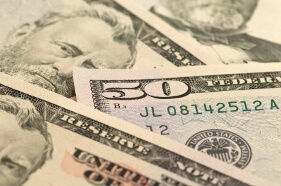As was expected, this trading week provided plenty of news important for the US dollar. But while fundamentals look good, the greenback was not particularly strong, ending the week lower against many most-traded counterparts.
The Federal Reserve did not provide many surprises, keeping its policy unchanged, but suggested in the statement that the weakness of the US economy in the first quarter of this year was transitory. Economic data released over the week seems to support such theory, with healthy employment growth, accelerating expansion of the services sector, and solid (though slowing) growth of the manufacturing sector. That reinforced the outlook for an interest rate hike from the Fed in the near future, and as of now the CME FedWatch tool shows 78.5% probability of such an event in June. Yet the dollar did not react very positively to the supportive fundamentals, likely because traders were more concerned with the second round of the French Presidential elections this weekend and the probable victory of centrist Emmanuel Macron.
Meanwhile, currencies like the Australian and the New Zealand dollars were under pressure from underwhelming macroeconomic reports from China. The Canadian dollar suffered from a huge slump of crude oil prices.
EUR/USD rallied from 1.0910 to 1.0986 — the highest weekly close since November. AUD/USD slid from 0.7468 to 0.7411 even though the currency pair managed to rally to 0.7556 during the week. USD/CAD closed at 1.3664, near its opening of 1.3655 after rallying to 1.3793 — the highest level since February 2016.
If you have any questions, comments or opinions regarding the US Dollar,
feel free to post them using the commentary form below.
